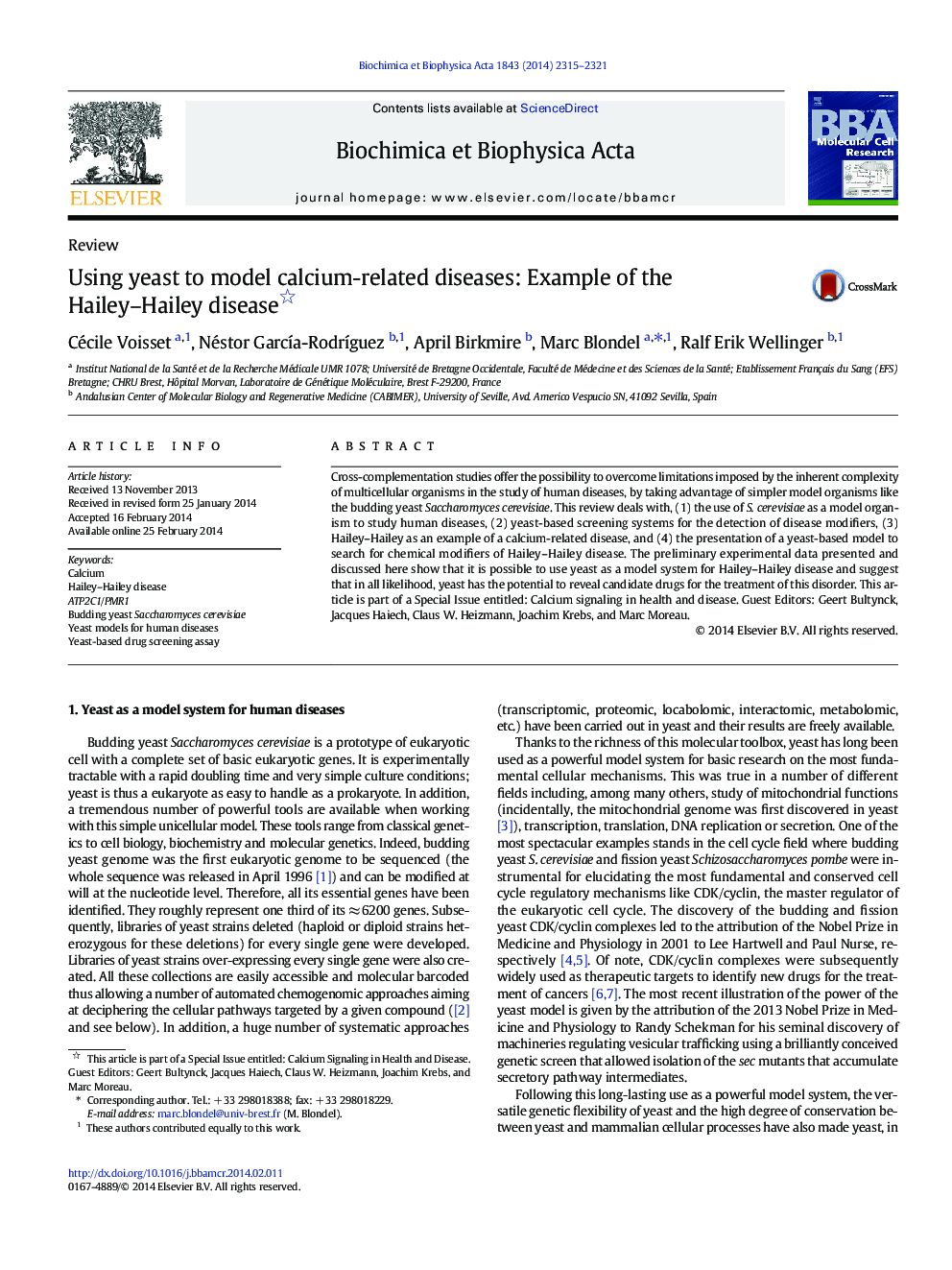| Article ID | Journal | Published Year | Pages | File Type |
|---|---|---|---|---|
| 1950559 | Biochimica et Biophysica Acta (BBA) - Molecular Cell Research | 2014 | 7 Pages |
•The use of budding yeast S. cerevisiae as a model for human diseases is discussed.•Relevance of yeast for studying calcium related process and diseases is presented.•A yeast-based model for the Hailey–Hailey skin disease (HHD) is described.•We report a drug screening performed using the yeast HDD model
Cross-complementation studies offer the possibility to overcome limitations imposed by the inherent complexity of multicellular organisms in the study of human diseases, by taking advantage of simpler model organisms like the budding yeast Saccharomyces cerevisiae. This review deals with, (1) the use of S. cerevisiae as a model organism to study human diseases, (2) yeast-based screening systems for the detection of disease modifiers, (3) Hailey–Hailey as an example of a calcium-related disease, and (4) the presentation of a yeast-based model to search for chemical modifiers of Hailey–Hailey disease. The preliminary experimental data presented and discussed here show that it is possible to use yeast as a model system for Hailey–Hailey disease and suggest that in all likelihood, yeast has the potential to reveal candidate drugs for the treatment of this disorder. This article is part of a Special Issue entitled: Calcium signaling in health and disease. Guest Editors: Geert Bultynck, Jacques Haiech, Claus W. Heizmann, Joachim Krebs, and Marc Moreau.
